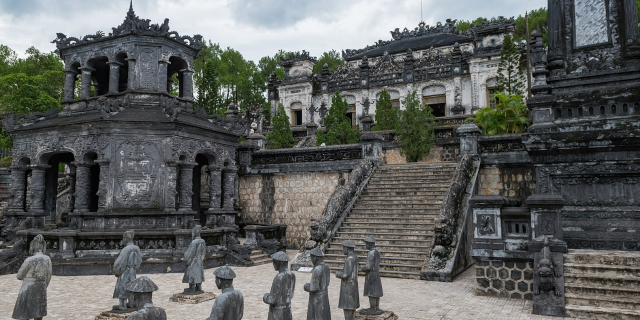Vườn quốc gia Phong Nha – Kẻ Bàng
( Phong Nha – Kẻ Bàng National Park )Phong Nha-Kẻ Bàng (Vietnamese: Vườn quốc gia Phong Nha-Kẻ Bàng) is a national park and UNESCO World Heritage Site in the Bố Trạch and Minh Hóa districts of central Quảng Bình Province in the North Central Coast region of Vietnam, about 500 km south of Hanoi. The park borders the Hin Namno National Park in Khammouane Province, Laos to the west and 42 km east of the South China Sea from its borderline point. Phong Nha-Kẻ Bàng National Park is in a limestone zone of 2,000 km2 in Vietnamese territory and borders another limestone zone of 2,000 km2 of Hin Namno in Laotian territory. The core zone of this national park covers 857.54 km2 and a buffer zone of 1,954 km2.
The park was created to protect one of the world's two largest karst regions with 300 caves and grottoes and also protects the ecosystem of limestone forest of the Annamite Range region in North Central Coast of Vietnam.
Phong Nha-Kẻ Bàng is note...Read more
Phong Nha-Kẻ Bàng (Vietnamese: Vườn quốc gia Phong Nha-Kẻ Bàng) is a national park and UNESCO World Heritage Site in the Bố Trạch and Minh Hóa districts of central Quảng Bình Province in the North Central Coast region of Vietnam, about 500 km south of Hanoi. The park borders the Hin Namno National Park in Khammouane Province, Laos to the west and 42 km east of the South China Sea from its borderline point. Phong Nha-Kẻ Bàng National Park is in a limestone zone of 2,000 km2 in Vietnamese territory and borders another limestone zone of 2,000 km2 of Hin Namno in Laotian territory. The core zone of this national park covers 857.54 km2 and a buffer zone of 1,954 km2.
The park was created to protect one of the world's two largest karst regions with 300 caves and grottoes and also protects the ecosystem of limestone forest of the Annamite Range region in North Central Coast of Vietnam.
Phong Nha-Kẻ Bàng is noted for its cave and grotto systems as it is composed of 300 caves and grottos. A 2009 survey brought the total discovered length of the cave system to about 126 km, with many areas still not well explored. Sơn Đoòng Cave, which was discovered in the 2009 survey by British and Vietnamese explorers, is considered the largest cave in the world. Even before this discovery, Phong Nha held several world cave records, including the longest river as well as the largest combined caverns and passageways.
The park derives its name from Phong Nha Cave, containing many rock formations, and Kẻ Bàng forest. The plateau on which the park rests is one of the finest and most distinctive examples of a complex karst landform in Southeast Asia. This national park was listed in UNESCO's World Heritage Sites in 2003 for its geological values as defined in its criteria viii. In April 2009, the world's largest cave was re-discovered by a team of British cave explorers of the British Caving Association led by a local farmer named Ho Khanh.





![Jérémie B. - CC BY-SA 4.0 [node:title]](/sites/default/files/styles/640x320/public/pla/images/2021-03/Hang_%C3%89n_Cave_-_201505_-_JB.jpg?h=1c9b88c9&itok=-XbNuGkx)

























Add new comment